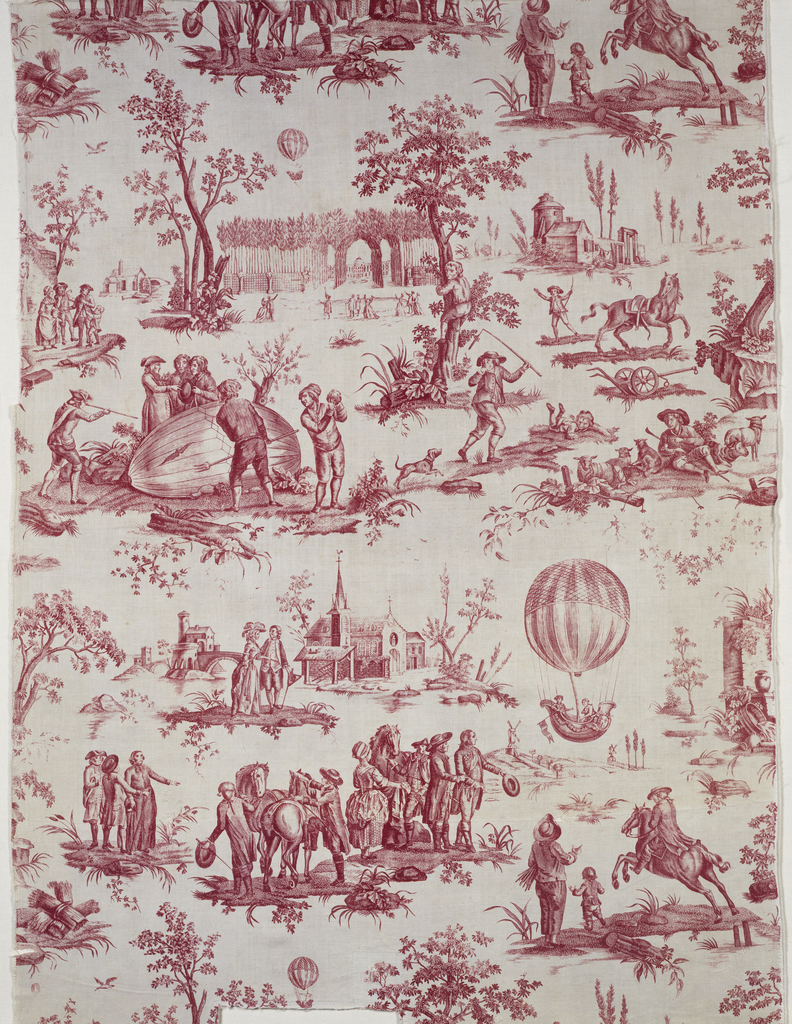On August 27, 1783, the skies above the French commune of Gonesse were briefly darkened by a floating figure. The peasants, filled with fear by the unusual sight, shot down the hovering object and attacked it with pitchforks because they believed it was a monster. The “monster” was actually a hot air balloon. This scene of armed farmers surrounding a deflated balloon is one of the vignettes depicted on Le Ballon de Gonesse, a commemorative textile that captures the popularity of balloons in late eighteenth-century France.
The experimentation with and successful flights of hot air balloons in France from 1783 to 1787 resulted in “Balloon Mania.” During this period balloons became favored motifs in the visual and decorative arts. For example, the French sculptor Clodion proposed a monument (never realized) dedicated to the inventor of the balloon and Marie Antoinette owned a set of chairs with hot air balloon finials. Textile producers realized that depicting contemporary events on fabrics would result in greater sales because the fabrics would appeal to a wider audience and, in addition, serve a patriotic purpose by celebrating French achievements. Le Ballon de Gonesse, produced by the Oberkampf factory in Jouy, depicts three balloon scenes from events that took place in 1783. These events were popular in the press and were a source of national pride, perfect subjects for a printed textile. The first scene shows the August 27th flight of an unmanned balloon that was launched by Jacques A. C. Charles and Nicolas-Louis Robert and unexpectedly and dramatically ended by the people of Gonesse. The second scene shows the beginning of the December 1st flight of Charles and Robert over the Tuileries Garden in Paris, and the third scene depicts the end of this 25-mile flight with their arrival in Nesles Prairie, outside of Paris.[1]
It was important to place textiles depicting contemporary political and cultural happenings into production quickly in order to capitalize on public interest. This proved to be challenging since engraving the copperplates for printing and the printing process itself could take up to two months in the best conditions.[2] Although these fabrics had the widest appeal, it is not surprising they also went out of fashion quite quickly and became unsellable, especially if commemorating political events, as the public’s focus shifted to the most recent news. Since these textiles were made for clothing and interior decoration, their ephemeral popularity can be understood, after all, no fashionable eighteenth-century woman would want to be caught wearing yesterday’s news.
Megan Elevado is a Brooklyn native who is fascinated by East German and Soviet culture and design. She earned her BA at New York University and completed her MA in the History of Decorative Arts and Design at Parsons The New School for Design in May 2013.
[2] Ibid., 165-7.
